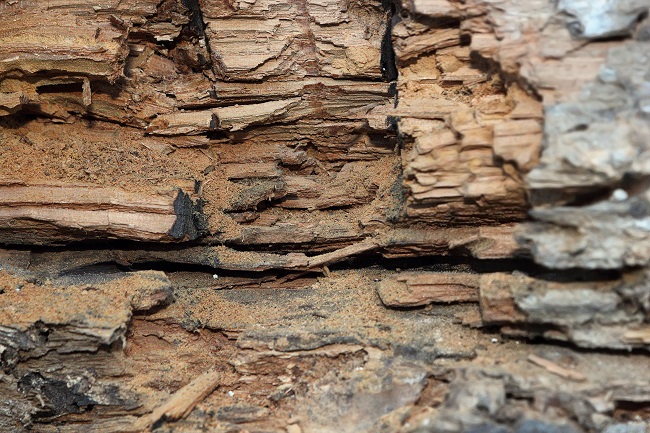Texas Oak Wilt: A Devastating Disease
The name of the disease, Texas Oak Wilt, doesn’t sound that harmful, but don’t be fooled. Texas Oak Wilt is one of the most damaging diseases to infect oak trees in the United States. In fact, over 1 million trees were destroyed in approximately 76 counties in Central Texas. Caused by the fungus Ceratocystis fagacearum, Texas Oak Wilt destroys an infected tree’s water-conducting system. All oak trees are vulnerable to Texas Oak Wilt. Yet, live oaks and red oaks are especially susceptible to the disease.

What are the symptoms of Texas Oak Wilt?
In infected trees, there are foliar and fungal symptoms of Texas Oak Wilt. However, a laboratory test of diseased tissue from the tree will confirm a diagnosis of Texas Oak Wilt.
In diseased live oaks, the leaf vein first turns a darker green. Then the leaves will develop yellow veins which then turn brown, a symptom called veinal necrosis. Defoliation of the dead leaves may occur rapidly, between 1 to 6 months. Some infected live oaks, on the other hand, may survive a few years.
Red oaks never survive Texas Oak Wilt. They can die in as little as 3-4 weeks after showing signs of the disease. In spring, the smaller leaves on red oaks may wilt or turn a pale green or brown. Mature leaves on red oaks may turn dark green, light green, or a bronze color. A fungal symptom on infected red oaks is the development fungal mats, or infected spore-producing areas, under the bark of the trees.
How does Texas Oak Wilt spread?
Insects, in particular, nitidulid beetles, are attracted to the fruity odor and feed on the spores in fungal mats of infected red oaks. These insects then fly to other trees and spread the infection. Texas Oak Wilt is also spread through the roots of oaks, particularly live oaks. Many times live oaks grow in clusters and have connected roots making it easier for the infection to spread. In one year, the infection may spread up to 150 feet around infected trees. Infected logs and firewood can also spread the disease when stored near healthy oak trees.
How is Texas Oak Wilt treated and prevented?
First of all, most importantly is preventive you should feed your trees and add a systemic to reduce insect pressure both of which increase health and vigor which reduce risk of infection. If Oak Wilt is in the area an added trunk injection may be needed. Secondly, infected trees should be assessed, those determined unable to save should be immediately removed off the property. Finally, pruning should be avoided during the flight of the nitiulid beetle, with exception of dead tissues (dead limbs), dead limbs pose a risk to the tree health and persons who frequent beneath it.
If you believe your trees have Texas Oak Wilt, contact us to diagnose and treat your trees. We can protect your oak trees from being infected by this deadly disease.
